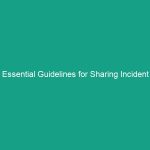Good Morning Team!
Today, we’re going to dive into an important topic that affects not just our workplace but the Environment as a whole: Environmental Audits. Our focus will be on understanding what environmental audits are, why they are crucial for our operations, and how we can identify and manage risks associated with them. This knowledge is vital for ensuring our Safety and compliance with Regulations.
Understanding Environmental Audits
So, what exactly is an environmental audit? In simple terms, it is a systematic evaluation of our environmental performance. This process helps us identify how our activities impact the environment and assess whether we are complying with relevant laws and regulations.
Environmental audits are crucial because they help us:
- Identify potential environmental risks before they become significant issues.
- Ensure compliance with environmental regulations, which protects us from fines and legal action.
- Enhance our operational efficiency by identifying waste and inefficiencies.
- Promote a culture of environmental responsibility within our team.
One common misconception is that environmental audits are only necessary for large companies. In reality, every business, regardless of size, can benefit from understanding its environmental impact.
Key Hazards, Risks, and Safety Considerations
Now, let’s discuss some specific Hazards and risks associated with environmental audits. These can include:
- Non-compliance with regulations: Failing to comply with environmental laws can lead to hefty fines and legal repercussions.
- Pollution: Improper waste management can result in soil, water, or air pollution, affecting both the environment and public health.
- Resource depletion: Inefficient use of resources can lead to scarcity and increased costs.
- Reputational damage: Negative environmental impacts can harm our company’s image and stakeholder trust.
The real-world consequences of ignoring these risks can be severe, from financial penalties to serious environmental damage. By recognizing these hazards, we can take proactive steps to mitigate them.
Best Practices, Procedures, & Actionable Advice
To effectively conduct environmental audits and address identified risks, here are some Best Practices to follow:
1. Conduct Regular Audits
Schedule regular audits to assess your operations and identify potential risks. Regular audits help ensure ongoing compliance and continuous improvement.
2. Implement a Checklist
Use an environmental audit checklist to guide your evaluation. This checklist should cover:
- Waste management practices
- Energy consumption
- Water usage
- Emissions and discharges
3. Engage Employees
Involve your team in the audit process. Encourage them to share their observations and suggestions for improvements. This not only enhances awareness but also promotes a sense of responsibility.
4. Document Findings
Always document your findings during the audit. This documentation serves as a record of compliance and can guide future improvements.
5. Develop an Action Plan
After identifying risks, create an action plan to address them. This plan should include specific steps, timelines, and responsible individuals.
Case Study: Lessons Learned
Consider the example of a manufacturing plant that ignored its waste disposal protocols. The result was not only legal trouble but also significant environmental damage that took years and substantial resources to rectify. By learning from such incidents, we can better appreciate the importance of conducting thorough environmental audits.
Regulations, Standards, and Compliance
Understanding relevant regulations is critical for our operations. Here are some key Standards to be aware of:
- OSHA Regulations: These regulations set the standard for Workplace Safety, including environmental considerations.
- ISO 14001: This international standard outlines how to improve environmental performance through efficient resource management.
- Company Policies: Familiarize yourself with our internal policies regarding environmental management.
Compliance with these standards not only protects our employees but also enhances our reputation as a responsible organization.
Employee Engagement & Discussion
Now that we’ve covered the essentials, let’s open the floor for discussion. Here are some questions to consider:
- What environmental challenges have you encountered in your work?
- How can we improve our current practices?
- Are there any resources you think would help us in conducting better audits?
Your input is invaluable, and together we can identify the best strategies to enhance our environmental performance.
Conclusion & Key Takeaways
In conclusion, understanding and conducting environmental audits is crucial for identifying and addressing risks within our workplace. Remember:
- Conduct regular audits to stay compliant and efficient.
- Engage with your team and document findings.
- Develop action plans to address identified risks.
By prioritizing these practices, we not only ensure our safety but also contribute positively to the environment. Thank you for your attention and commitment to making our workplace safer and more responsible. Let’s work together to implement these strategies and continue to improve!


